How to Make Homemade Cavatelli Without a Machine
Homemade cavatelli is possible with just six easy steps (including making pasta dough from scratch!). Here's how to make homemade cavatelli without a machine.
by Teresa Laurenzo
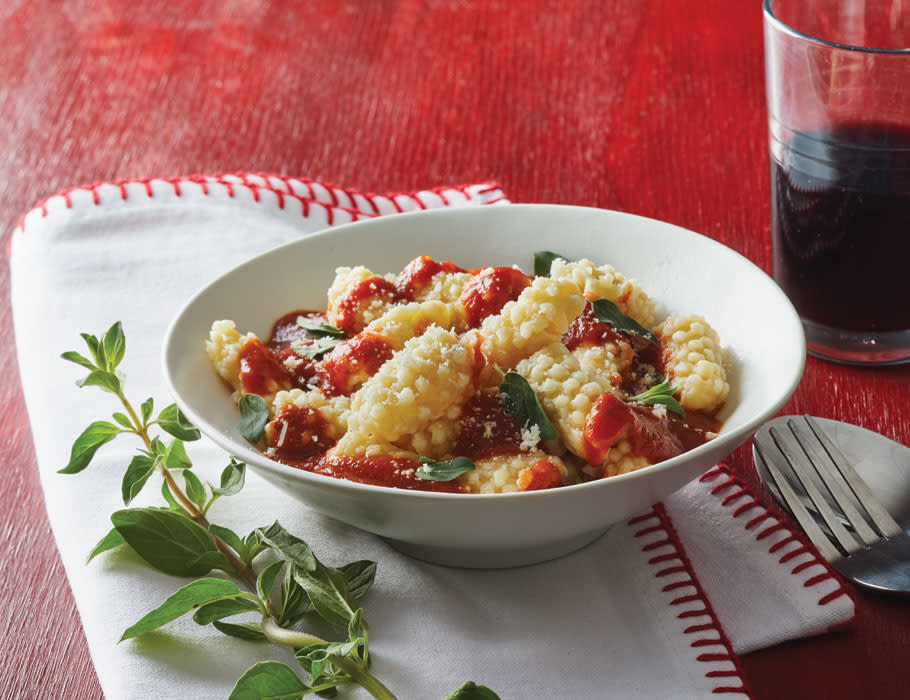
(Note: This post contains affiliate links. As an Amazon Associate, we earn from qualifying purchases made through affiliate links.)
The little ridged shells of cavatelli are originally from the Molise and Puglia regions of Italy. Cavatelli are considered one of the oldest types of pasta. My own history with this type of pasta started as a small child eating Nonna Anna’s homemade cavatelli. Nonna had a way with pasta that it seems most all Italian grandmothers do. And, since I grew up with her homemade pastas, breads, and red sauce, her Italian kitchen ultimately shaped the way I judge all Italian food. When any member of the family is fixing an Italian dinner and the aromas of the ingredients smell like heaven, that’s when we say ‘It smells like Nonna’s house,’ which is a supreme compliment.
Cavatelli are traditionally handmade by rolling dough into long ropes, then cutting into 1-inch lengths. Although some styles of the pasta are smooth, it’s fun to make the classic ridged texture by pressing each piece of dough on a cheese grater to create the traditional feature. This rolling motion also creates a shell-shaped cavity that holds any type of sauce perfectly.
Similar to gnocchi, the cavatelli that I know and love are made with ridges or grooves. You can either roll them on a small grooved wooden board, similar to a gnocchi board, or make the ridges using a cheese grater (which is my preference and the way I was taught). To use the grater method, simple roll the cut squares of dough onto the small side of a box grater with your three middle fingertips. Don’t worry, it may take a few times to practice the press and pull method to achieve just the right amount of pressure. See steps, below.
For the pasta dough, use your favorite dough recipe or our Basic Pasta Dough recipe. It’s tried and true, and uses a food processor for ease. This dough turns out perfect every time. The pasta comes out so tender that it’s now my go-to for any kind of pasta dough whether making a shaped pasta like cavatelli, or fettuccine and linguine. Note: there are so many discussions out there about the right flour to use, any one of which contribute to a good dough, so feel free to experiment and come up with the combination that works best for you.
How to make cavatelli pasta
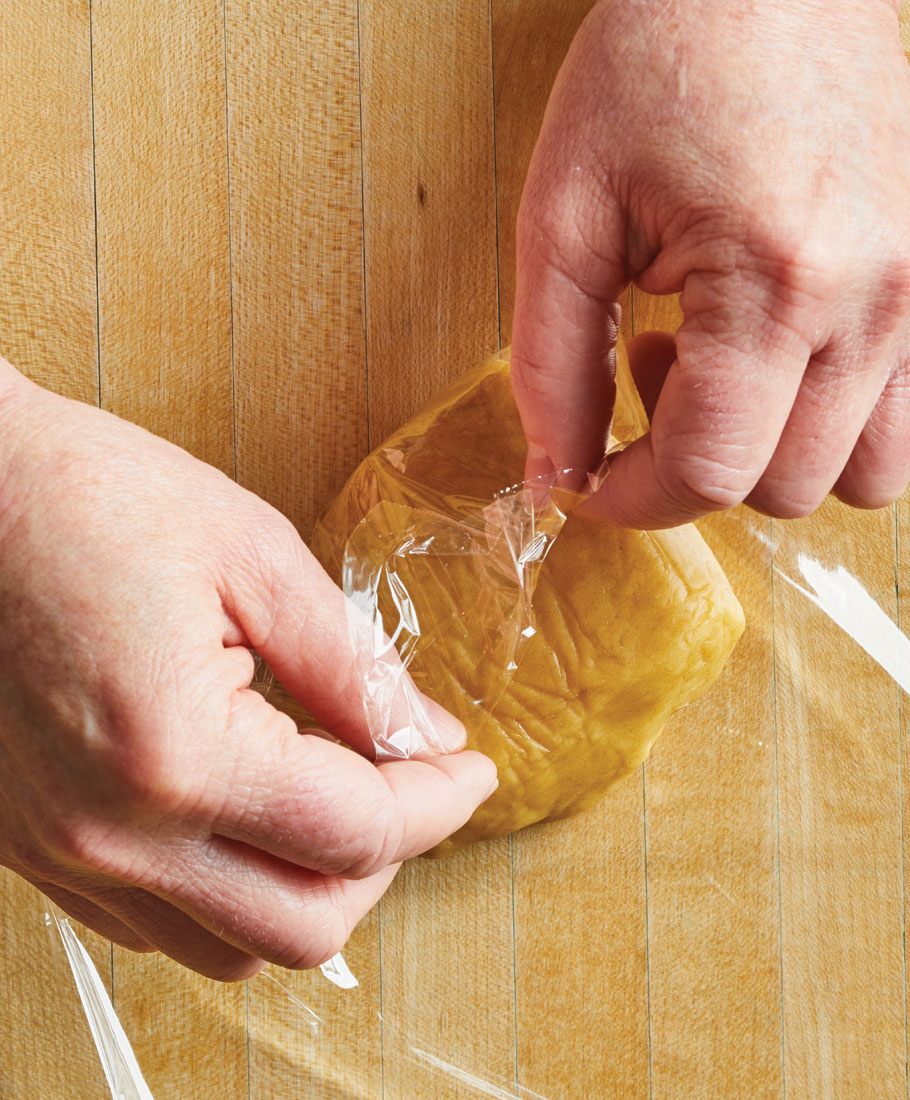 Step 1: After making dough, knead on a floured surface by hand until smooth. This generally takes about 8-10 minutes. Divide dough into quarters, wrap each portion in plastic, and let rest 30 minutes or refrigerate up to overnight. Let dough come to room temperature before working with refrigerated dough.
Step 1: After making dough, knead on a floured surface by hand until smooth. This generally takes about 8-10 minutes. Divide dough into quarters, wrap each portion in plastic, and let rest 30 minutes or refrigerate up to overnight. Let dough come to room temperature before working with refrigerated dough.
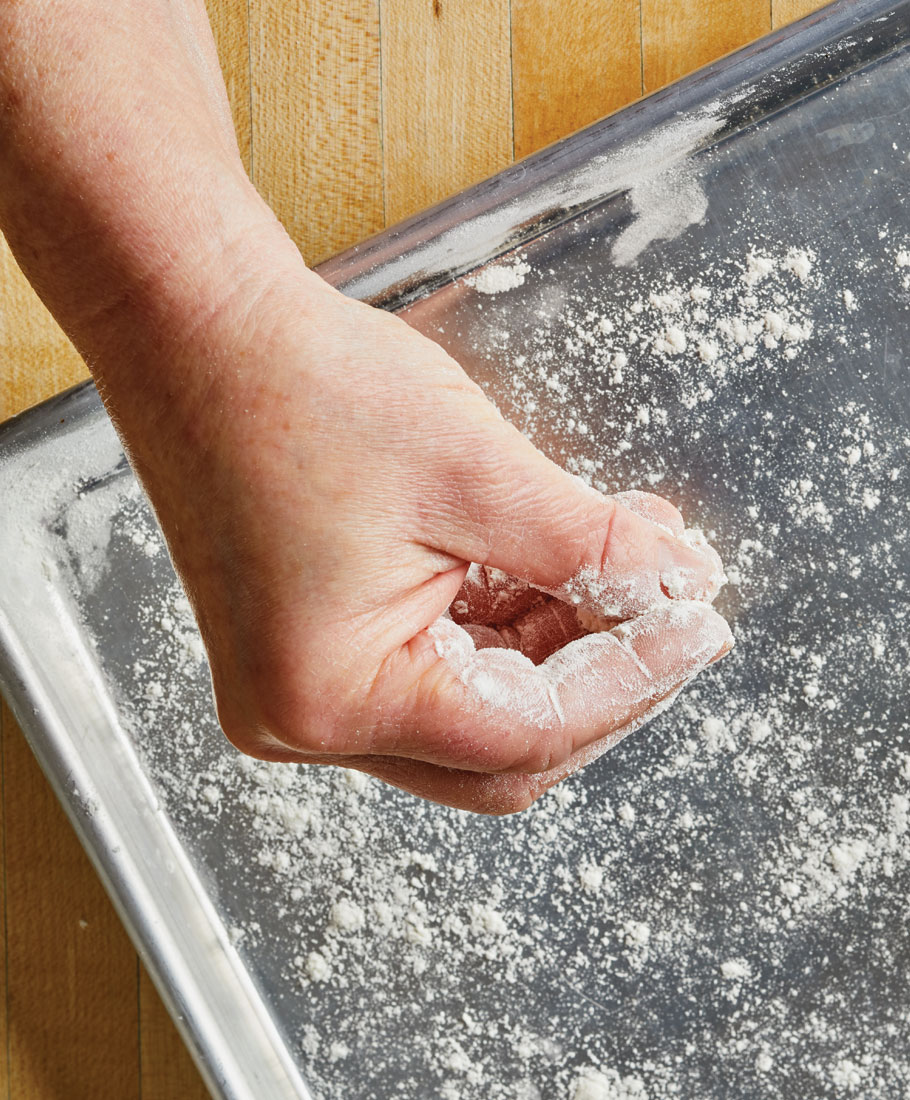 Step 2: Sprinkle a large baking sheet with flour, set aside.
Step 2: Sprinkle a large baking sheet with flour, set aside.
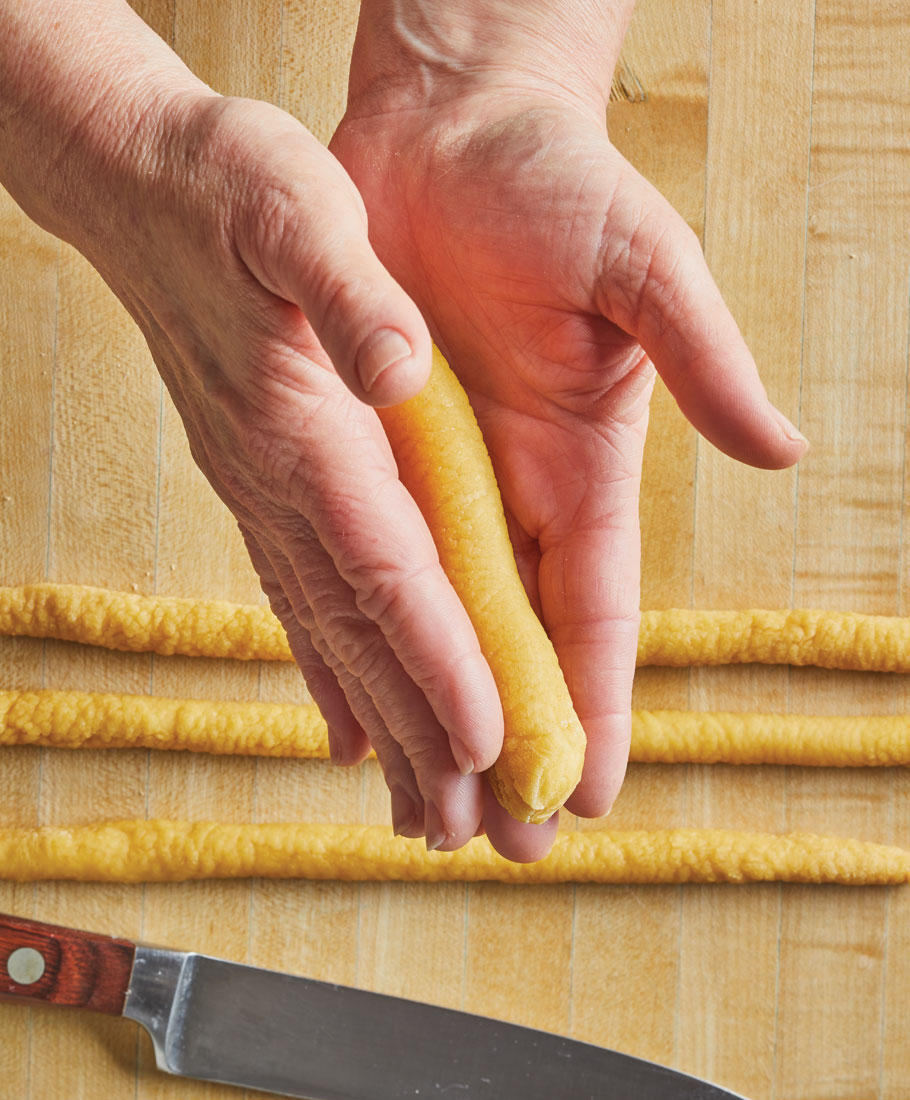 Step 3: Roll one portion of dough at a time between palms into a rope about 3/8” in diameter. Achieving this diameter is critical so that your pasta won’t be too thick and doughy. As the rope extends in length, cut it in half for easier handling. To prevent dough from drying out during this process, moisten palms as needed while rolling.
Step 3: Roll one portion of dough at a time between palms into a rope about 3/8” in diameter. Achieving this diameter is critical so that your pasta won’t be too thick and doughy. As the rope extends in length, cut it in half for easier handling. To prevent dough from drying out during this process, moisten palms as needed while rolling.
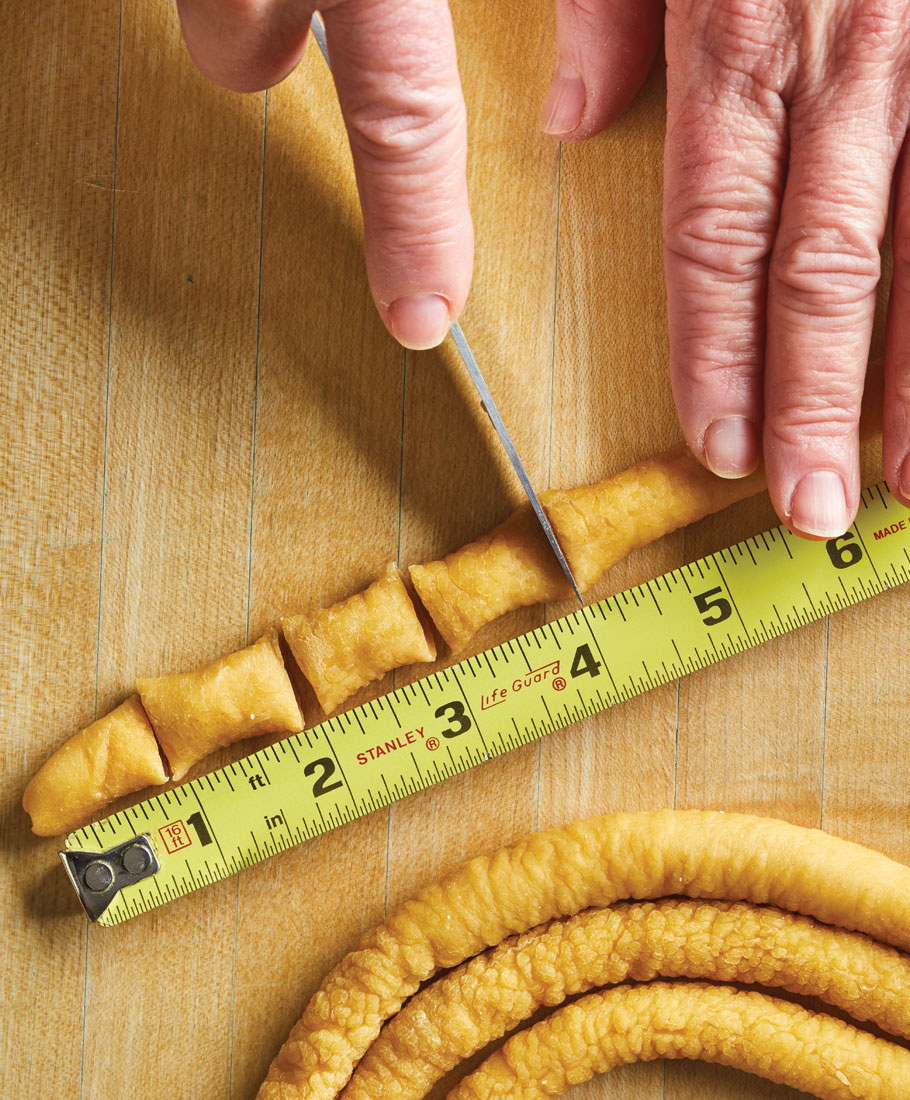 Step 4: Cut the rope into 1” lengths.
Step 4: Cut the rope into 1” lengths.
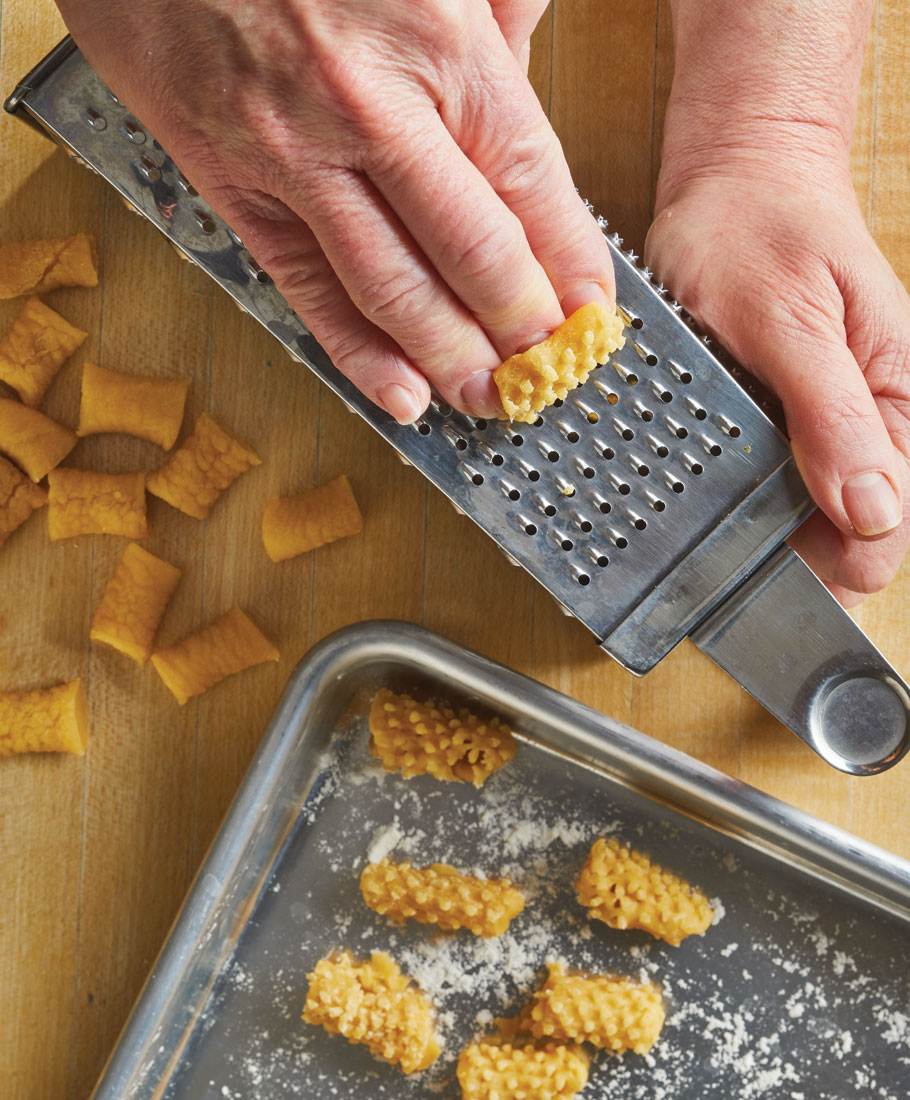 Step 5: Using your three middle fingertips, slowly and firmly press each piece on the small side of a box cheese grater and pull the dough toward you. It will lengthen slightly and form a curl. Transfer pieces to prepared floured baking sheet. Repeat with remaining dough.
Step 5: Using your three middle fingertips, slowly and firmly press each piece on the small side of a box cheese grater and pull the dough toward you. It will lengthen slightly and form a curl. Transfer pieces to prepared floured baking sheet. Repeat with remaining dough.
How to Cook Fresh Cavatelli
Cook cavatelli in boiling salted water, about 14-18 minutes depending on thickness, until tender and cooked through.
How to Store Homemade Cavatelli
Cavatelli can be covered with plastic wrap and refrigerated up to 4-6 hours. Or, you can freeze the pasta by letting the pieces dry a little bit, then place the pieces on a baking sheet in a single layer without touching. Place the baking sheet in the freezer on a level surface, and once the pieces are firm, transfer to a resealable plastic bag. Pasta can be frozen up to 3 months. It’s not necessary to thaw them before cooking.
The Best pasta Sauces for Cavatelli
This pasta shape catches any sauce extremely well, so your options are endless. Traditional sauces from Molise are pork sausage ragu, and aglio olio e peperoncino with Italian parsley and fresh tomatoes. In my nonna’s household, the sauce of choice was red sauce — a simple marinara made with tomatoes, basil, oregano, and Romano cheese. If you’re looking for a new sauce to try, check out the wide range of sauces on Cuisineathome.com.
Although you can buy mass-produced cavatelli at the grocery store, the homemade version is miles above in flavor, texture, and quality. Give it a try!
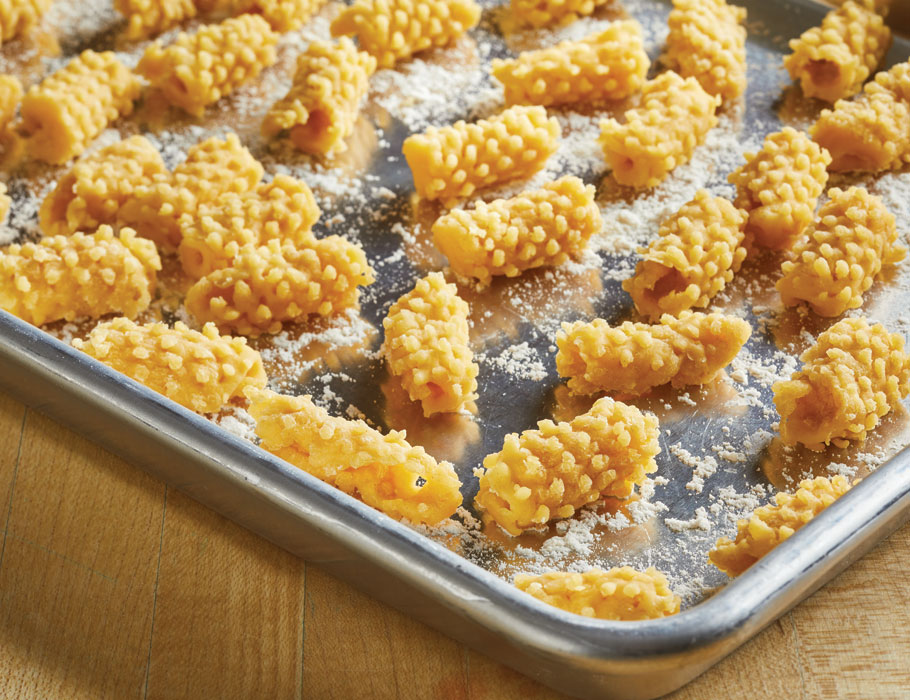
Product Recommendations
Interested in cooking? Need some supplies?
Check out some of the tools we like. All products featured on Cuisine at Home are independently selected by our editors; we may earn an affiliate commission from qualifying purchases through our links.